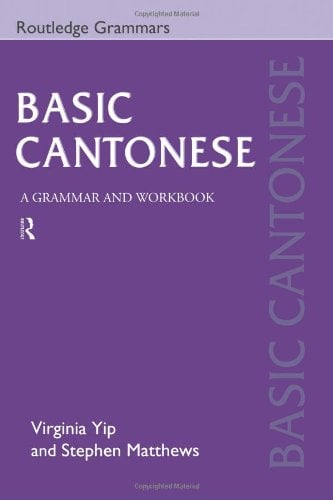Did you know that Cantonese is the third most common language in the USA? Many overseas Chinese speak Cantonese rather than Mandarin. The language is also spoken in Hong Kong, Macau, and Guangdong Province of the mainland. If you want to be able to converse with Cantonese speakers anywhere in the world, then you might want to consider Basic Cantonese: A Grammar and Workbook.
The book is designed to help you learn how to speak and understand the basics of the language using Romanized Cantonese. Interestingly enough, Cantonese does not have its own written system, but follows standard Chinese. Since this is very difficult to learn, if your goal is to simply communicate orally, then learning how to read and write standard Chinese is cumbersome and probably a waste of time, which is why Basic Cantonese relies on a Romanized version of the language to help you learn.
.jpg)
The book may not help you learn to read and write, but it does help you to build a strong verbal foundation. It does this by focusing primarily on grammar as the title of the book infers. There are twenty-eight chapters in the book, many of which are named after a grammatical concept such as “Imperatives” or “Auxiliary Verbs”. There are a few chapters which are not directly focused on grammar such as “Consonants” and “Vowels and Diphthongs”, both of which concentrate on pronunciation. There are also a few subject related chapters like “Requests and thanks” and “Numbers, dates, and times”.
When it comes to grammar, the book really does deliver. However, if you are just starting your journey of learning Cantonese then this book is really lacking when it comes to helping you to increase your word power or even just helping you understand common conversation topics. This book works well as a supplement to your learning experience, but doesn’t stand on its own very well.
Cantonese is the third most common language in the USA and many overseas Chinese speak Cantonese rather than Mandarin. The language is also spoken in Hong Kong, Macau, and Guangdong Province of the mainland.
Basic Cantonese: A Grammar and Workbook also isn’t the best book to choose if you are studying alone. It is possible to self study with this book, but only if you are really dedicated. As grammar is anyway a dry but necessary topic, this book does very little to spice it up. It works really well with a teacher, especially one who can make the experience a lot more interesting. If you are a Cantonese teacher, the best thing this book has to offer you is a structured way to teach beginner’s Cantonese grammar. You can build months of lesson plans by following the book. You can probably use this book without even really putting much effort into lesson planning, however, if you want to make things a little more palatable for your students then it’d probably be a good idea to think of some fun activities to hold their attention. In general, this book does exactly what it promises – it covers all the necessary aspects of Cantonese grammar – but it’s just not all that enthralling.




.jpg)